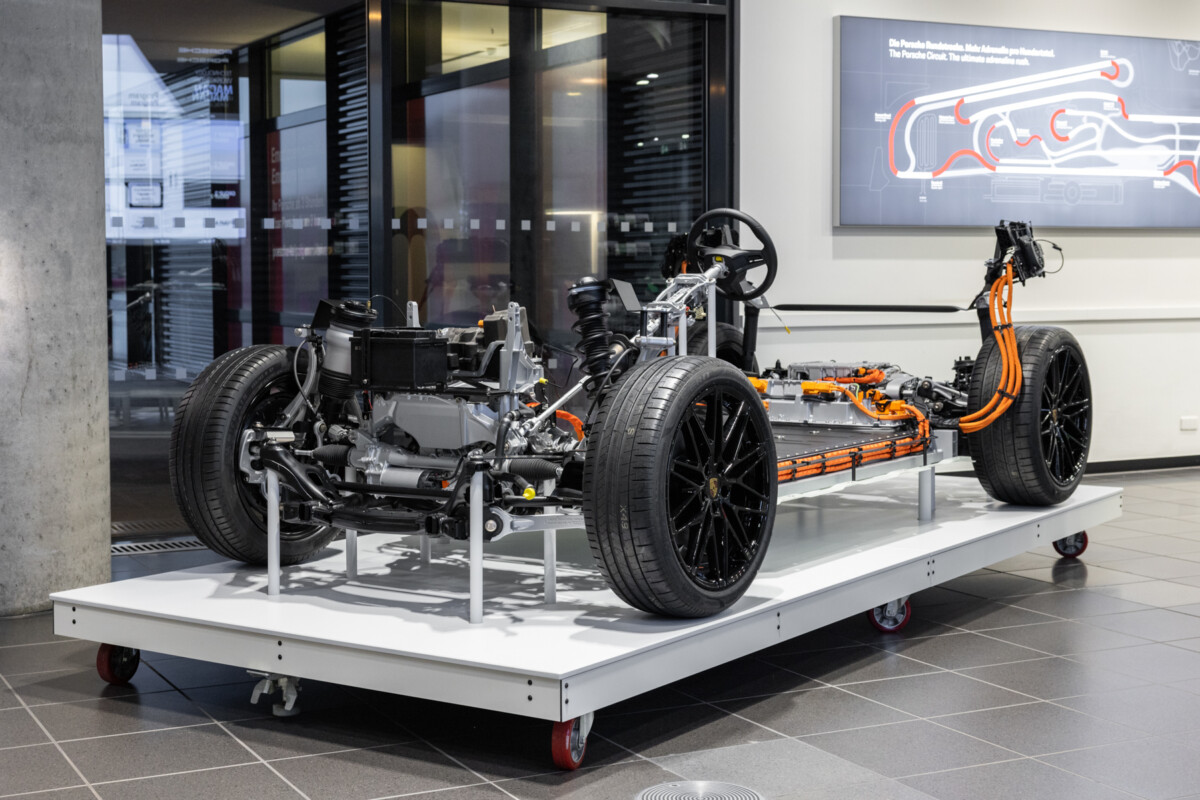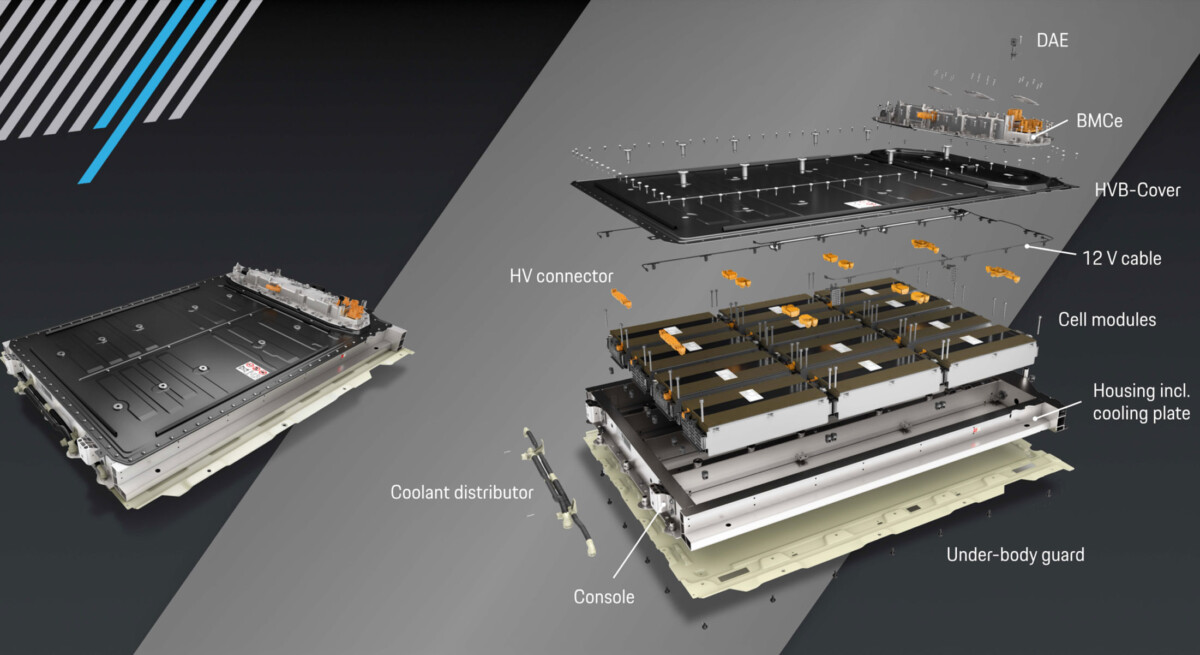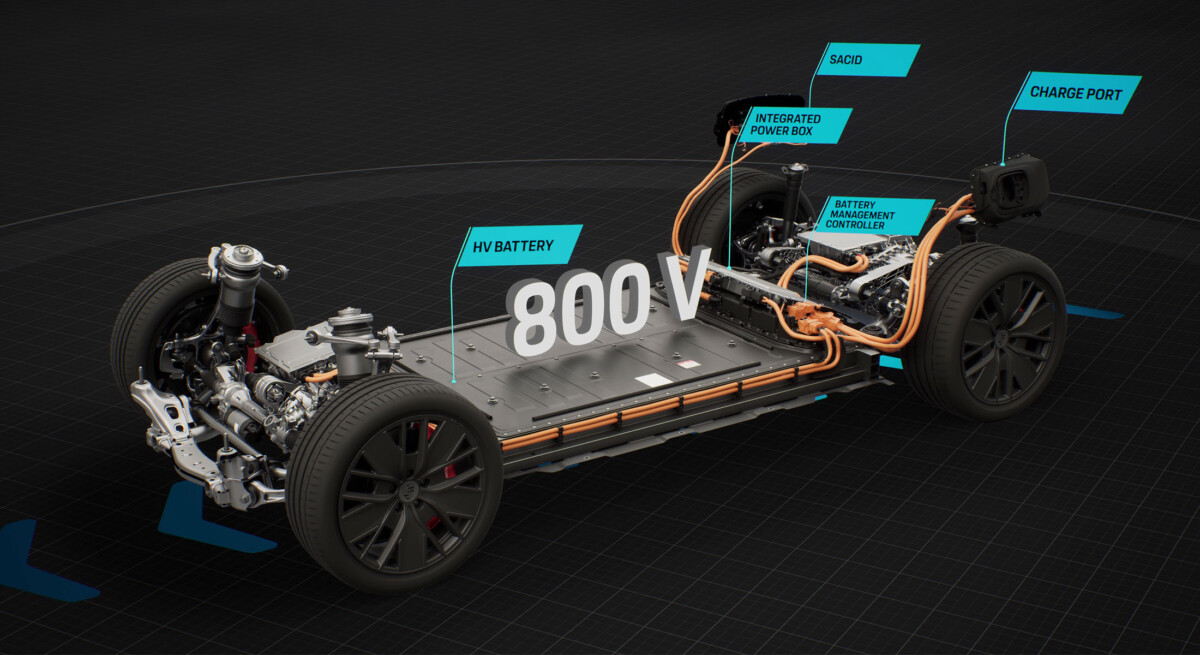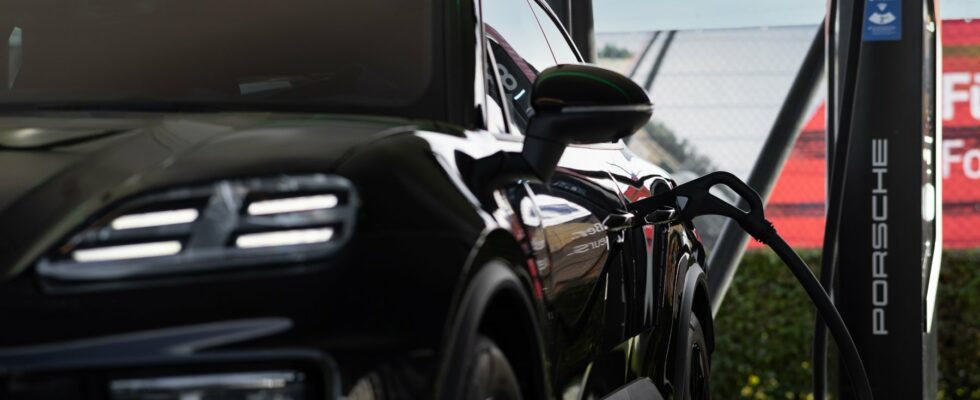If the next electric Porsche Macan will be efficient on the road, it should also be efficient when charging quickly. The Stuttgart firm certainly promises 10 to 80% recharging in 22 minutes on an 800 volt network, but it also announces that it has optimized recharging in all circumstances, particularly on “old” 400 volt terminals. Surprise: it’s the same solution as that of Tesla on its Cybertruck.
On December 12, Porsche revealed the first information on its electric Macan. A sporty electric SUV that we were able to discover during a press presentation in Leipzig in Germany and which has already made a strong impression on us during trips on the circuit and “off road”.
Electric or not, the Macan is indeed a Porsche, supercharged in the Turbo version by its two engines developing a combined power of 450 kW (612 hp) and a torque of 1000 Nm.
Performance made possible in particular thanks to its PPE platform and its 800 volt architecture. In many aspects, this famous 800 volt network, already adopted by Porsche, Audi, Hyundai, Kia and Maserati, regularly resonates as the solution to reduce charging times compared to the 400 volt architecture usually used.

Based on this observation, it is not surprising that Tesla has also adopted 800 volts for its Cybertruck which promises to break a record for charging power with a peak of 350 kW. Enough to achieve, according to the chief engineer of the Californian firm, 15 to 85% in 18 to 20 minutes.
For its part, Porsche claims a peak power for the Macan of 270 kW on an 800 V terminal, enough to recharge its NMC (Nickel Manganese Cobalt) battery from 100 kWh in 10 to 80% in 22 minutes in optimal conditions. The fact remains that the German sports SUV and the enormous American pick-up, as surprising as it may seem, have one thing in common: they have the same trick for optimizing charging times on a 400 volt terminal.
Split the battery to boost the charge to 400 volts
Porsche or even Tesla, in fact, have decided to integrate electronic components into their vehicles allowing this large battery of 100 kWh at 800 volts to be divided into two virtual batteries of 50 kWh at 400 volts.
Thus, the 12 battery modules (of 15 prismatic cells each) are no longer recharged in series as is the case on a very high voltage 800 volt terminal, but in parallel according to a composition of two virtual batteries, each with 6 modules of 15 cells.

A very clever and very promising technology, the outlines of which the German brand had already presented in January 2023.
However, you will have understood that to reach such levels of power in 800 volts, you must access the right terminal, itself in 800 volts and that all the stars are aligned. The joys of electronics, the impact of the weather or even poor (or even the absence of) preconditioning of the battery are enough to constrain the electricity fairy and degrade charging performance. Peak power will not be reached or only very briefly.
This is why, given the network coverage and the (still small) number of 800 volt terminals, identifiable by their power greater than 250 kW, it is essential for manufacturers (and motorists) to work to optimize also 400 volt charging.
Information distilled drop by drop
Unfortunately, at the time of writing, Porsche has still not revealed all the information related to recharging the Macan at 400 volts. No communication is made, for example, on the time needed to make a 10-80% on such a network. Rightly so, since the network of 400 volt terminals offers a wide variety of power.
However, during our press trip, we obtained some additional explanations on how the device works. We were indeed the only ones to use the mixed reality device made available on site to carry out an interview with Marc Patt, from the Electrical Development and e-Mobility department within Porsche Germany. Here is our video:
This technical pirouette is therefore made possible thanks to the new Battery Management Controller Extender (BMCe) of the Macan, whose mission is to switch from series charging to parallel charging to get the most out of the terminal, even if it means fooling it a little.
A technical pirouette that already makes us fantasize
The advantage of such a device seems obvious to us but, failing to be able to test it in real life (we can’t wait!), we can only “fantasize” about the benefits it provides. By adopting the paralleling of the batteries, Porsche offers itself the possibility of circumventing the majority of the energy and electronic constraints which limit the charging powers.
This remains hypothetical, but this innovation could allow the Macan to join the Tesla Model S among the models accepting a maximum record power of 250 kW at 400 volts. Better yet, we also believe that this parallel charging technology will allow Porsche to get maximum energy from these stations for as long as possible.

We can quite imagine that each of these virtual 50 kWh batteries will be less subject to the heating caused by series charging. This could then considerably change the shape of the charging curve with high powers maintained much longer.
Just imagine, on a 400 volt terminal, we could assume that the power allocated to each virtual battery could be between 120 or 140 kW with a power plateau held for longer, before dropping less drastically than in a 400 configuration. more “classic” volts. What if the Macan was capable of holding a power of more than 100 kW (2 x 50 kW) up to 80%?
In other words, this would drastically reduce the charging time of the Porsche Macan on an “old” 400 volt terminal, compared to the Porsche Taycan, which degrades its charging power to 150 kW in its conditions due to its converter. . Charging time which then increases from approximately 22 to 30 minutes.

“A sweet dream” some will say, not so inaccessible others will say, especially if we consider the performance that we were able to note during our test of the Tesla Model Y which benefits from the new fast charging. As a reminder, the Tesla Model Y only requires 20 minutes to go from 10 to 80%… at 400 volts, thanks to a brand new BYD battery.
In any case, we contacted Marc Patt, to try to have more precision and even – and here we are dreaming – to recover a typical charging curve in 400 volts for the Macan, but we do not have for it time no return. Case to be continued, but we will not fail to come back to it when Porsche provides us with more information on the subject.
